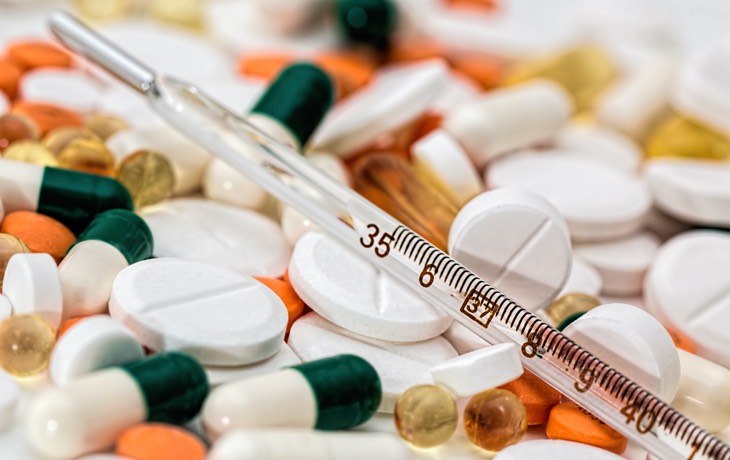Physicians on two continents report that antiviral drugs designed for HIV and Ebola are effective against 2019-nCoV, improving patient symptoms and respiratory function in as little as 24 hours. This is extremely good news.
In Thailand, a medical team treating the country’s 19 patients has already reported early success with lopinavir and ritonavir in a small number of patients. They reported that symptoms of 2019-nCoV improved markedly within 48 hours after treatment with the antiviral cocktail therapy.
In the United States, a team at Washington State University hospital in Everett reported that they had treated the state’s only case of 2019-nCoV, the USA’s first, with remdesivir, and seen improvements in his condition within 24 hours.
As we mentioned in our very first 2019-nCoV reporting, at the beginning of the outbreak teams around the world began searching for existing antiviral drugs which may be effective against 2019-nCoV. This search is based on finding proteins in the 2019-nCoV genome which are similar to the targets of existing antiviral drugs, and partially relies on the literature of coronavirus drug repurposing which has flourished since 2019-nCoV’s cousin SARS first infected humans in 2003.
This search has landed on protease inhibitors and reverse transcriptase inhibitors as the most likely possible candidates, with three drugs from Abbvie (the protease inhibitors lopinavir and ritonavir) and Gilead (the reverse transcriptase inhibitor remdesivir) considered leading candidates. Abbvie developed lopinavir and ritonavir as HIV therapies, while Gilead originally developed remdesivir for Ebola.
After these early successes, samples of all three drugs are being shipped to China for early trials.
While these drugs have been reported as helping the symptoms of 2019-nCoV, it’s less clear whether they would reduce the death rate among serious cases, hasten the recovery of 2019-nCoV patients, or prevent contraction of the disease among exposed persons who have not yet developed symptoms. Even if they work, much remains to be learned.
It may be learned very quickly, though. Reports indicate that nine clinical trials have been registered for different therapies to treat 2019-nCoV in China, seven of them using lopinavir and ritonavir. One uses another antiviral, while the final one only uses a corticosteroid. Two of the lopinavir/ritonavir trials are being conducted in Wuhan, while the others are scattered across other sites in China.
If these protease inhibitors prove effective against 2019-nCoV, they are currently widely available enough, and simple enough to administer, that they could be rapidly deployed for most 2019-nCoV patients. Although the combination has been supplanted by more effective HIV therapies in the first world, Lopinavir and Ritonavir are currently administered to tens of thousands of third world HIV patients as a daily pill, with a bottle costing under $25 in India, and multiple companies making their own versions, so it’s very likely that enough could be scrounged up or produced to treat 2019-nCoV patients very broadly.
Gilead’s ability to mass produce remdesivir on a short timeline is less clear, since it is an experimental drug.
PS: 2019-nCoV is still not a bioweapon
These developments have opened up another front in the ongoing crowdsourced effort to recycle every plot point from the 1995 Dustin Hoffman movie Outbreak into a theory about 2019-nCoV. With hospitals in China now trying a pair of HIV drugs against 2019-nCoV after initial positive reports from a clinic in Thailand, people are asking: if HIV drugs work against 2019-nCoV, isn’t that evidence that 2019-nCoV might be a bioweapon made using HIV sequences? The answer is still no.
So, if HIV drugs work against 2019-nCoV, doesn’t that mean that those shared sequences that the Indian team found are the reason why? The answer is an unqualified no.
The sequence similarities (which are still the result of random chance) are located in the spike protein of 2019-nCoV, and the gp120 and Gag proteins of HIV, neither one of which is the therapeutic target of this drug.
Many viruses contain proteases, which they use to separate functionally different viral proteins which are transcribed and translated together, and without which an infected cell cannot assemble new virions. This makes protease inhibitors a potent class of antiviral drugs, used against HIV and hepatitis C, and in research against many other viruses. Because all proteases share peptide bonds as their substrate, their active sites have certain similarities which makes protease inhibitors sometimes more portable from one virus to another than some other classes of antiviral drugs.
This is why protease inhibitors originally developed against both HIV are being tried to see if they work with 2019-nCoV’s protease, and why prior research has suggested protease inhibitors against SARS. There are no reported unique sequence similarities between the proteases of HIV and 2019-nCoV.
All indications continue to show that 2019-nCoV is not a bioweapon. Dustin Hoffman is not needed here. But soon enough, a case of champagne might be in order.


You are reporting the comment """ by on